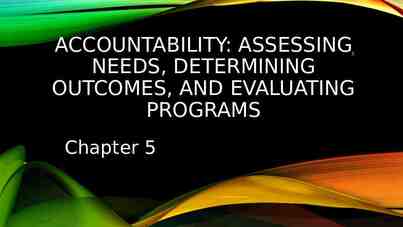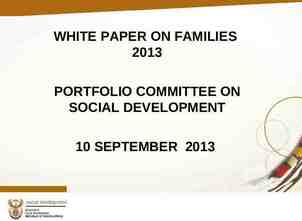Social Action 6th Semester, BS Social Work Department of Social Work,
9 Slides68.10 KB

Social Action 6th Semester, BS Social Work Department of Social Work, University of Peshawar Instructor: Asif Khan

Process of Social Action In general sense the term ‘process’ can be understood as a series of systematic steps undertaken to accomplish some desired and specified goal/goals. In social action process refers to the generally accepted steps or stages involved while moving towards achieving the objectives of social action. Following are the generally accepted steps or stages of social action process: 1. Awareness building stage 2. Organizing stage 3. Strategy development stage 4. Action stage

1. Awareness building stage: This is the first step of social action process. In this step/stage conscious efforts are made to critically understand different dimensions of the problems existent in the society, its root causes, and identify the various socio-economic and political factors perpetuating the problem at hand. It is not appropriate to identify understand the problem on the basis of subjective generalization and un-established information. Concrete and authentic statistical report can stand as evidential for any social analysis and advocacy and can be a great support for a social activist for finding ground for social activism. Hence, it is essential to carry out an extensive research on the issues affecting the society and to infer and develop a sound idea about the problem from practical perspectives. Besides, attempts are made in this step to make people aware of the causes and situations responsible for the social problems through the tactics of education and awareness. Shortly speaking, the first step/stage would call for the analysis of issues involved in the problem and providing information to those who are affected by the problem.

2. Organizing stage: The second step of social action process involves exploring the possible solutions to the problem and creating a public opinion on the same. This would involve organizing the people by using the community organization method of social work. In the process of organization of the people, a sense of collaboration, cooperation and we-feeling has to be generated in the minds of the people. When these are achieved the people are ready work together under one umbrella of leadership. The next challenge of the social activist is to build up people’s organizations at the community and local level, which will act as the common platform and a forum for the community people to work towards addressing the issues of the identified problem.

3. Strategies development stage: The third step in the process of social action is to plan, develop and adapt a suitable and workable strategy to achieve the determined goals. A particular strategy is adopted looking into the needs and situation of the problem on one hand and the clientele on the other. According to Lee, there are basically two strategies widely used in social action, such as negotiation and confrontation. The strategy of negotiation generally involves lobbying and submitting petitions to the appropriate authorities, campaigning for sensitizing people etc. Under this strategy, the social activist campaigns and bargains with the authorities/agencies with the aim of improvement or change in the existing conditions and tries to arrive at a consensus.

Contnd Confrontation is a strategy under which people collectively come to face the responsible stakeholders with certain conditions to be fulfilled. At times, negotiations fail. When negotiations come to failure the activists are bound to resort to the strategy of confrontation. This strategy sometimes witnesses conflict situations like strikes, lockouts, demonstrations, sit-ins etc. In such situation it should be remembered that social action as method of social work has to be essentially no-violent and should follow the ethics and values of social work. This strategy denotes bringing about some sort of disruption in the normal functioning of the society so as to make people, as well as the authorities realize the magnitude and significance of the issue.

4. Action stage: This is strategically the last stage of social action process but in certain cases there may be more steps required to or the activities may continue in the recycling process in order to achieve the goals of social action. The students should not be mistaken that, the strategies discussed in the previous point have not been applied yet. They have only been developed. Their application takes place only in this stage of social action process. Once the community based organizations become structured and the strategy for intervention is decided through consensus, the group embarks upon joint action. The joint action may be initiated with the collaboration of local voluntary organizations, the community based organizations and local leaders, spearheaded by the social activists.

Contnd. In this stage the actual implementation of the selected strategies are implemented. When negotiations come to failure, the activists are bound to resort to the strategy of confrontation. This strategy sometimes witnesses conflict situations like strikes, lockouts, demonstrations, sit-ins etc. In such situation it should be remembered that social action as method of social work has to be essentially no-violent and should follow the ethics and values of social work. This strategy denotes bringing about some sort of disruption in the normal functioning of the society so as to make people, as well as the authorities realize the magnitude and significance of the issue.

Contnd It should also be kept in mind that the process of social action should ideally take up the form of a movement so as to give it a sustainable form. Some problems are settled within a short span of time reach at the end of active social action. Some problems call for long term social action, which takes decades together to achieve the objectives of social action, because they involve critical process before reaching to the stage of consensus.






